Free Downloadable Storyboard – Washington Crossing the Delaware
$0.00
Free PDF download of the black and white “Washington Crossing the Delaware” storyboard. This is an 8×10 image that we use in our Freedom Gallery.
December 1776 had been a hard month General George Washington and the Revolutionary Army. They had not won a significant battle since the war began, and they were being chased all over New York, barely staying ahead of General Howe’s army. The colonies were not supporting General Washington with proper food, clothing and munitions and Congress was not able to compel them to do so under the Articles of Confederation.
Even though Congress had given Washington complete autonomy over the entire war effort, Congress had not ordered long-term enlistments. On December 31 the enlistments of all of the army except 1,400 would expire!
General Washington held a war council and decided on a bold move that he hoped would inspire his men to re-enlist and inspire the country to support the army. It was courageous and was born in near desperation. Washington knew that Colonel Rahl, commander of the Hessian camp, was a German who loved music and was often lax in military matters. He also knew the German soldiers celebrated Christmas with heavy drinking and believed both factors, plus the unexpected nature of the timing, would work in his favor.
Washington’s plan was to cross the Delaware River with a considerable force about nine miles above Trenton and march down on the Hessians (German mercenaries from the city of Hesse). They were to march on “Christmas day at night, one hour before day.” The Hessians were paid German mercenaries who had proved ruthless and cunning in their war efforts against the Continental Army. Both General Howe and General Cornwallis had turned the war effort over to the Hessians for the winter and were back in New York waiting for the weather to change so they could cross the Delaware River on ice to capture Philadelphia.
On December 23, 1776, Tom Paine, a soldier under General Washington and a skilled writer, wrote the first of his Crisis Papers. He used the top of a drum to write the stirring words that began:
These are times that try men’s souls. The summer solder and the sunshine Patriot will, in this crisis, shrink from the service of their country; but he that stands it now, deserves the love and thanks of man and woman. Tyranny, like hell, is not easily conquered; yet we have this consolation with us, that the harder the conflict, the more glorious the triumph. What we obtain too cheap, we esteem too lightly; it is dearness only that gives every thing its value.
General Washington was so moved by Paine’s words that he had the words read to his troops more than once to invigorate them prior to their surprise attack on the Hessians.
On December 25 the Continental Army crossed the Delaware in pitch black on a bitter cold night. Their clothing was wretched, and more than one man left bloody footprints from the holes in their boots. Two men froze to death that night, and many of the soldiers’ muskets were rendered useless from the wet snow. The men were told, “Push on and use the bayonet!”
The night was dark and tempestuous, the drifting ice drove the boats off course and threatened them with destruction. Two of Washington’s generals never made it across the river that night. General James Ewing could not get his artillery into the boats, and General Putnam stayed in Philadelphia to cope with an uprising that never happened. The rest finally arrived on the shore nine miles north of Trenton at 3:00 a.m., and by 4:00 a.m. they were lined up and ready to march.
It was about 8:00 a.m. when Washington’s column arrived in the village where the Hessians were encamped. They broke into three groups and attacked from the north, south, and west. The Hessians were panic-stricken and didn’t know whether to retreat or to fight. Captain William Washington, cousin to General Washington, and Lieutenant James Monroe (5th President of the United States) led the attack to dislodge the sentinels. Both were critically wounded, and Monroe would have likely bled to death had a doctor not been present. When the Hessian leader, Colonel Rahl, formed a counter attack, they were ready for him, dropping the Hessian commander from his horse with two well-aimed slugs. Colonel Johann Rahl presented his sword in surrender to General Washington and later died in the home of a kind Quaker family who cared for him.
General Washington took the extended hand of one his majors and exclaimed, “This is a glorious day for our country!” It was an almost unbelievable victory for the beleaguered American commander and his troops. Nearly 1,000 Hessians were taken captive; another 115 were killed or wounded. Four American had been wounded, but not a single soul was lost in battle. The victory came at a crucial time and gave the American troops the confidence to re-enlist and keep fighting for our freedom.
Emanual Gottlieb Leutze was the son of a mechanic who immigrated to America for political reasons. Brought to the United States from Germany when he was 9 years old, he was raised in Fredericksburg, Virginia, and then in Philadelphia where he got his art instruction. Ironically, Leutz intended “Washington Crossing the Delaware” to buoy the spirits of German liberals whose Revolution in 1848 had failed, but it became interpreted as an expression of American patriotism. The studies for the ice on the river were made at the Rhine River in Germany. Leutze painted it in 1851. The original 12×21 foot painting now hangs in the Metropolitan Museum of Art in New York City.
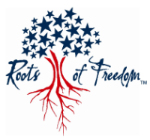
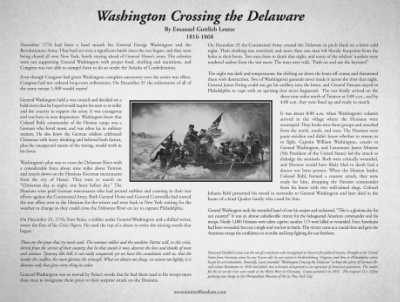
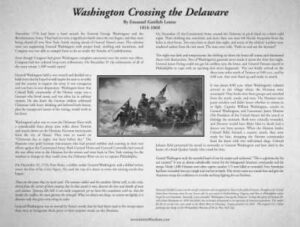
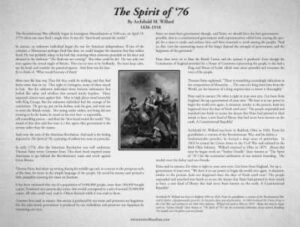
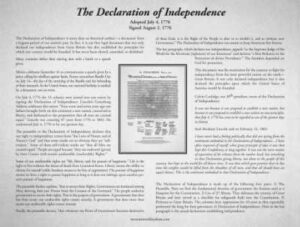
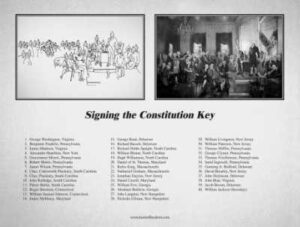
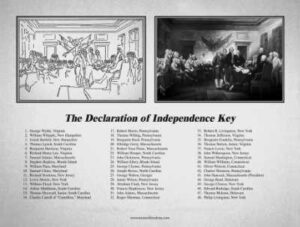
Reviews
There are no reviews yet.